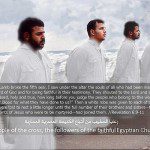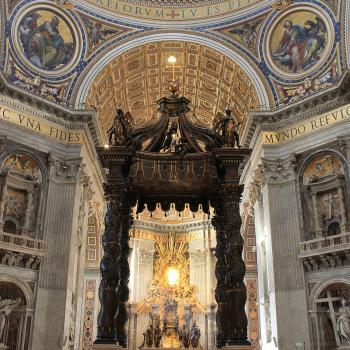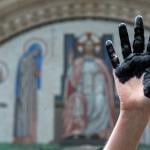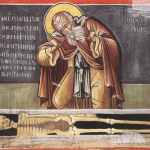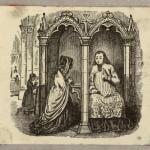I wrote this a couple of years ago. Since I was too busy to write anything yesterday, I’ve decided to post it again today. It’s in serious need of updating in light of recent events, (which I may do on Monday) but I think it’s still worth a look, as it is.
Genocide was the 20th Century’s iconic crime. It was, for much of the world, a 100-year bloodbath.
Murderous governments used killers armed with everything from Xyklon B to machetes to wage war against civilians with the aim of wiping entire tribes and populations of people from the earth. It began with the Armenian Genocide and kept on rolling through to the Sudan. Other eras were guilty of genocidal war. But when it came to efficiency and numbers, nobody did it better than the genocidal warriors of the 20th Century.
Our hope, as we left the old century behind, was that we had somehow contrived to leave these impulses for organized murder behind us. We thought they belonged in the forgotten junk drawer of that era, beside the vacuum tubes and eight track tapes. Unfortunately, genocide trailed us into the 21st Century and is already making a real name for itself here.
Not so long ago, within living memory, we stood beside the mass graves and crematoriums of the Third Reich and vowed “never again.” But, as my grandmother used to tell me, “Never say never.”
Genocide led us on a blood-drenched march through the last half of the 20th Century. In 50 short years of history, it drug us from the Nazi death camps to the Killing Fields of Cambodia, through the slaughter in Rwanda, and on to the Sudan. Today, it is the Christians who are being targeted for extermination.
Each day brings a new and horrific story of Christians murdered because they are Christians in many places around globe, but particularly the Middle East and parts of Africa. Deacon Greg Kandra, over at The Deacon’s Bench, posted Monday on the plight of Christians in Syria.
In his post, Can Syria’s Christians Survive? Deacon Greg quotes a Wall Street Journal article that says in part:
“… Syria’s Christian communities are being severely tested by the uprising that has racked the country for more than a year. They think back to 636, when the Christian Byzantine emperor Heraclius saw his army defeated by Muslim forces south of present-day Damascus. “Peace be with you Syria. What a beautiful land you will be for our enemies,” he lamented before fleeing north to Antioch. In the 8th century, a famed Damascus church was razed to make way for the Umayyad Mosque—today one of Islam’s holiest sites.
Not a few Christians in modern-day Syria worry that the current crisis could end the same way for them if Bashar al-Assad and his regime are defeated by the rebel insurgency … ” Read more here: Can Syria’s Christians Survive?
This is especially poignant today, on the Feast of the Assumption, since this feast honors Mary, Our Lord’s mother. Our Lady spent her last years in what is modern day Turkey. Her last home is believed to have been high on a hillside not far from the city of Ephesus.
When I visited this site last year, I was impressed by the long lines of believers who had traveled from all over the world to stand in the cool shade of this hillside. It was equally striking to see Muslims and Christians in line together, waiting their turn to enter the tiny rooms of the reconstructed ruin of Our Lady’s home.
You can touch the stones that formed the lower portion of her original house, hear the breeze riffling through the trees, and drink from a spring that may have supplied her water. It’s easy to imagine how peaceful this home would have been for her, especially after visiting the stone metropolis of Ephesus not far away. Her empty grave must lie a short distance from this place. She was assumed into heaven from here.
I wanted to attend mass at this spot, but we got there too late in the day. What I did instead was break the “no entry” rule posted beside the ropes surrounding the little outdoor chapel and take a seat in one of the chairs. I wanted to be alone, to feel the Presence in that place and to pray. The guard eyed me quietly and then respectfully backed away, his rifle hanging limp at his side.
When I had told one of my Muslim companions that I wanted to be alone to pray, he said, “Pray for me too,” and I did.
It was easy here, in this quiet bubble of grace next to the long lines of pilgrims chattering in their many languages, to believe that we could put it all aside. We could give up the things that divide us and remember the things that make us one.
We are all born of woman. We will all die. We are children of the same One God Who loves us the way any parent loves his children.
That should be enough. It should be more than enough to make us think long and hard about this nasty habit we have of killing one another.
What are we going to say when we stand before God and try to explain ourselves?
It was unfathomable to me, sitting in that holy place, that there are people so demented and lost that they honestly believe that God will reward them for the wanton killing of His children. But I know that such people exist. I’ve witnessed first-hand the carnage that terrorists cause.
If there is one message in this Feast of the Assumption, it’s that we not only have One Father; we have One Mother, as well.
I saw Muslims and Christians, standing in line together to honor her. A hardened Turkish guard respectfully backed away to let me pray my Christian prayers. From The Deacon’s Bench, to the bleached stones of Ephesus and on uphill to the riffling breezes of her last home, Our Lady does what mothers always do.
She makes us family.
Mary truly is the Mother of God. Jesus gave her to humanity when He told the Apostle John, “This is your mother.” She is mother to us all, Muslim and Christian alike.
I think her love is the bridge that will one day bring us together.






